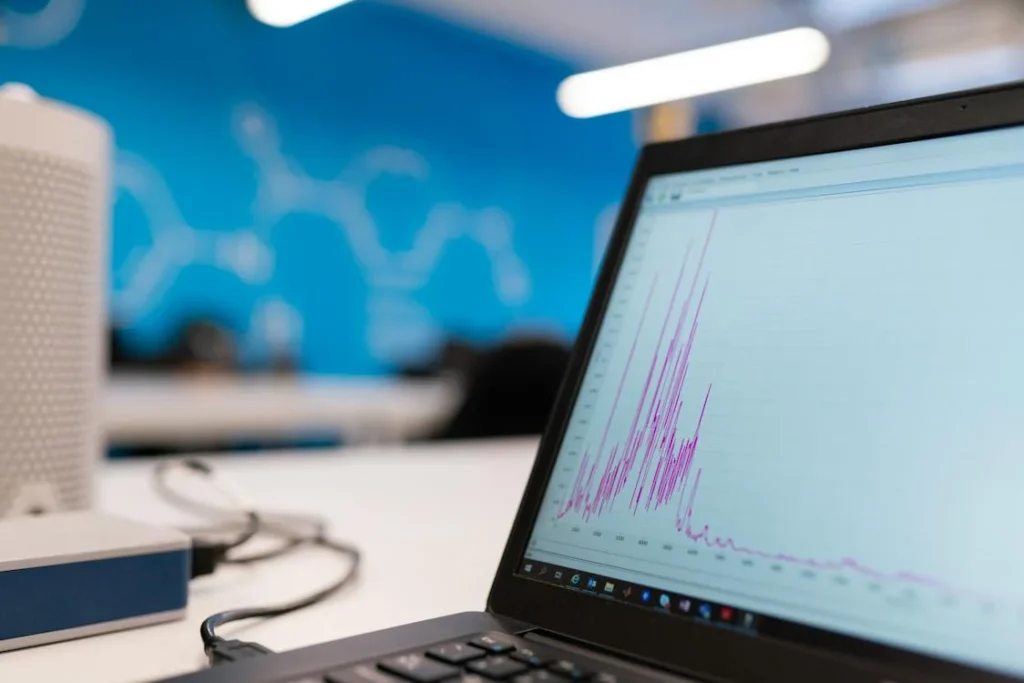Embarking on the quest to find the best analytics tool for your business can sometimes feel like trying to choose the best dessert at a buffet. Everything looks tempting, but you know not all of them will satisfy your craving for insights and growth. Today, we’re slicing through the options to compare two particularly flavorful choices: QlikView and Optimizely. Both are strong contenders in the analytics and optimization arena, but they serve up their insights in different ways. Let’s dip our spoons into the first serving: Ease of Implementation and Learning Curve.
| QlikView | Optimizely |
|---|---|
 |  |
| G2 Score -4.1 out of 5 | G2 Score -4.3 out of 5 |
| TrustRadius Score -8.0 out of 10 | TrustRadius Score -8.6 out of 10 |
Ease of Implementation and Learning Curve: Getting Your Dessert Ready
When you’re eager to taste the fruits of your analytics tool, you don’t want to spend ages in the kitchen. How quickly and easily you can get your tool up and running, and how steep the learning curve is, can make a big difference in your choice. Let’s see how QlikView and Optimizely stack up.
QlikView: The Master Chef’s Kitchen
QlikView is like walking into a master chef’s kitchen. It’s equipped with every tool you could imagine, offering unparalleled flexibility and power in data analysis and visualization. However, this professional kitchen requires some culinary skills, or in this case, technical prowess.
Implementing QlikView can be akin to orchestrating a gourmet meal. It’s highly customizable, which means you can tailor it to fit your exact business needs, but getting everything set up just right requires a deep understanding of both your data and the tool itself. This might mean you need a data analyst or IT professional to help you get started.
The learning curve in QlikView is more pronounced than with some other tools. But like learning to create a complex dish, once you’ve mastered it, the results can be incredibly rewarding. QlikView offers a depth of analysis and insight that is hard to match, making it well worth the investment in time and learning for businesses that are serious about data.
Optimizely: Ready-to-Eat Delights
Optimizely, on the other hand, is like walking into a kitchen where the prep work has been done for you. It’s designed with marketers and product managers in mind, focusing on ease of use and a more intuitive interface. Optimizely specializes in A/B testing and experimentation, providing a straightforward way to test changes to your website or product and understand their impact on user behavior.
Getting started with Optimizely is generally quicker and requires less technical knowledge than QlikView. Its user-friendly nature means you can start experimenting and gaining insights sooner, without the need for extensive training or a deep understanding of data analytics. This accessibility makes Optimizely a tempting option for teams looking to make data-driven decisions without a dedicated data analyst.
The learning curve with Optimizely is gentler, making it an appealing choice for businesses that want to democratize data insights across their team. While it may not offer the same depth of data analysis as QlikView, its focus on experimentation and optimization can provide valuable insights for improving user experience and conversion rates.
Pricing: The Cost of Crafting Your Data Feast
The pricing models of analytics tools can be as varied as the dishes at a banquet, with each offering different levels of access, capabilities, and scalability. Here’s how QlikView and Optimizely stack up in terms of pricing.
QlikView: The Custom Gourmet Experience

QlikView doesn’t have a one-size-fits-all pricing model. Instead, it offers customized pricing based on your specific needs and the scale of your operations. This is akin to working with a gourmet chef to craft a personalized menu for your event. The cost will vary depending on several factors, including the number of users, the server requirements, and the level of support and maintenance services you opt for.
While this customized approach ensures you only pay for what you need, it can make it challenging to understand the initial investment without engaging in a detailed consultation with Qlik’s sales team. For larger enterprises with complex data analytics needs, this model can offer great value, as the tool’s powerful capabilities are tailored to fit your unique requirements. However, for smaller businesses or those with more straightforward needs, the cost might be prohibitive, especially when just starting.
Optimizely: Transparent, Tiered Pricing

Optimizely offers a more transparent, tiered pricing model, making it easier for businesses of all sizes to understand what they’re getting into from the outset. The platform typically provides several plans, ranging from basic options suitable for small teams or startups, to more advanced plans designed for large enterprises with extensive testing and optimization needs.
This tiered approach allows businesses to scale their use of the tool as they grow, starting with more affordable options and upgrading as their needs become more sophisticated. For companies focusing on A/B testing and optimization, Optimizely’s pricing model offers the flexibility to invest in more advanced features and capabilities as they become necessary.
The clarity and scalability of Optimizely’s pricing make it an attractive option for businesses that value straightforward costs and the ability to predict their investment in analytics tools. However, it’s important to note that while Optimizely’s base plans are relatively accessible, costs can escalate as you move up tiers and add more features.
Data Integration and Flexibility: Blending the Ingredients
The ability to integrate various data sources and how flexible the tool is in manipulating and presenting this data can significantly impact your analytics capabilities. Here’s how our contenders fare in this arena.
QlikView: The Culinary Artist’s Palette
QlikView is like a culinary artist’s palette, offering a broad spectrum of colors (or in this case, data sources) to create your masterpiece. Its powerful data integration capabilities allow you to pull in data from virtually anywhere: databases, spreadsheets, cloud sources, and even big data. Once in QlikView, the data becomes part of its in-memory storage, allowing for rapid, flexible manipulation.
This flexibility is QlikView’s strong suit. You can slice and dice your data in countless ways, creating custom reports, dashboards, and visualizations that fit your exact needs. The tool’s associative data model means that all your data is interconnected, enabling you to uncover insights and relationships you might not have seen otherwise.
However, with great power comes great complexity. To fully take advantage of QlikView’s data integration and flexibility, you’ll likely need a data specialist on your team. The tool’s breadth and depth make it incredibly powerful, but also mean there’s a significant learning curve to overcome before you can wield it effectively.
Optimizely: The Ready-Mix Cake
Optimizely, in contrast, is like a high-quality ready-mix cake. It’s designed to be straightforward and easy to use, providing a more focused but less flexible approach to data integration and manipulation. Optimizely excels in integrating data related to user behavior, particularly for A/B testing and web optimization. Its platform allows for easy setup of experiments and quickly gathers data on user interactions and conversions.
While Optimizely might not offer the same level of data source integration as QlikView, it shines in its simplicity and focus. For businesses primarily interested in optimizing their web presence based on user data, Optimizely provides a streamlined, efficient path to insights. Its integration with web analytics tools and customer data platforms enables teams to focus on improving the user experience and conversion rates without getting bogged down in complex data manipulation.
The trade-off with Optimizely’s ease of use is that it doesn’t offer the same level of depth or flexibility in data analysis as QlikView. It’s tailored for specific types of data and insights, making it a powerful tool for its intended purpose but potentially limiting if you’re looking to conduct broader data analytics.

Related: Check out our free SEO suite

Reporting Capabilities and Visualization: Presenting the Feast
The way analytics tools visualize data and their reporting capabilities can transform raw data into a feast for the eyes, making complex information understandable at a glance.
QlikView: The Gourmet Presentation
QlikView is like a gourmet meal, carefully plated with attention to detail, making each insight a visual delight. It offers extensive customization options for reporting and data visualization, enabling businesses to tailor their dashboards and reports to meet their exact needs. With QlikView, you can create complex, interactive visualizations that not only present data beautifully but also allow users to explore and drill down into the data for deeper understanding.
QlikView’s strength lies in its ability to handle vast amounts of data, presenting it in an accessible and visually appealing way. This capability is particularly beneficial for organizations that rely on comprehensive data analysis to drive decision-making. The tool’s associative model enhances its visualization capabilities by showing connections and relationships within the data, offering insights that might not be immediately apparent.
However, leveraging QlikView’s advanced reporting and visualization features can require a significant time investment to learn the intricacies of the tool. Additionally, creating the most effective visualizations often necessitates a good understanding of data analytics principles.
Optimizely: The Clear and Concise Chart
Optimizely, in contrast, focuses on clarity and simplicity in its reporting and visualization. It might not offer the same level of customization as QlikView, but it provides clear, straightforward reports and dashboards that highlight key metrics and results from experiments. Optimizely is designed to make it easy for teams to quickly understand the impact of A/B tests and make informed decisions based on user behavior data.
The platform excels in visualizing experimentation outcomes, showing clear winners, and offering insights into how changes affect user engagement and conversion rates. This focus on actionable insights makes Optimizely an invaluable tool for marketers and product managers looking to optimize their digital properties without getting lost in overly complex data analysis.
While Optimizely’s reporting and visualization capabilities are powerful in their simplicity, they may not satisfy organizations looking for deep data exploration and highly customized reporting. Its strength lies in its ability to deliver clear, immediate insights that can drive action.
Conclusion
In the bustling marketplace of analytics tools, where options abound and each promises to be the key to unlocking valuable insights, our journey comparing QlikView and Optimizely has revealed the unique flavors each brings to the table. Like choosing between a gourmet feast and a masterfully crafted dessert, the decision between these two analytics powerhouses depends on your taste—your business needs, goals, and resources.
As you move forward, remember that the best analytics tool is the one that aligns with your strategic goals, fits within your budget, and integrates seamlessly into your operations. It’s not just about the data you can gather but how you use that data to make informed decisions, innovate, and set your business apart from the competition.
READ NEXT:
- QlikView vs HubSpot Marketing Analytics: The Best Analytics Tool for You
- QlikView vs Amplitude: The Best Analytics Tool for You
- Bitrix24 vs Vtiger: The Best CRM Tool for You
- Oracle Analytics Cloud vs Zoho Analytics: The Best Analytics Tool for You
- Oracle Analytics Cloud vs MonsterInsights: The Best Analytics Tool for You
- 11 Marketing Analytics Tools to Elevate Your Data-Driven Strategies
- 29+ Digital Analytics Software to Skyrocket Your Digital ROI






















Comments are closed.